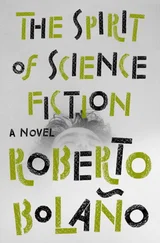Ben Goldacre - Bad Science
Здесь есть возможность читать онлайн «Ben Goldacre - Bad Science» — ознакомительный отрывок электронной книги совершенно бесплатно, а после прочтения отрывка купить полную версию. В некоторых случаях можно слушать аудио, скачать через торрент в формате fb2 и присутствует краткое содержание. Жанр: Публицистика, на английском языке. Описание произведения, (предисловие) а так же отзывы посетителей доступны на портале библиотеки ЛибКат.
- Название:Bad Science
- Автор:
- Жанр:
- Год:неизвестен
- ISBN:нет данных
- Рейтинг книги:5 / 5. Голосов: 1
-
Избранное:Добавить в избранное
- Отзывы:
-
Ваша оценка:
- 100
- 1
- 2
- 3
- 4
- 5
Bad Science: краткое содержание, описание и аннотация
Предлагаем к чтению аннотацию, описание, краткое содержание или предисловие (зависит от того, что написал сам автор книги «Bad Science»). Если вы не нашли необходимую информацию о книге — напишите в комментариях, мы постараемся отыскать её.
Bad Science — читать онлайн ознакомительный отрывок
Ниже представлен текст книги, разбитый по страницам. Система сохранения места последней прочитанной страницы, позволяет с удобством читать онлайн бесплатно книгу «Bad Science», без необходимости каждый раз заново искать на чём Вы остановились. Поставьте закладку, и сможете в любой момент перейти на страницу, на которой закончили чтение.
Интервал:
Закладка:
This is not just for ethical reasons (although it is enshrined in the Declaration of Helsinki, the international ethics bible). Placebo-controlled trials are also frowned upon by the evidence-based medicine community, because they know it’s an easy way to cook the books and get easy positive trial data to support your company’s big new investment. In the real world of clinical practice, patients and doctors aren’t so interested in whether a new drug works better than nothing , they’re interested in whether it works better than the best treatment they already have .
There have been occasions in medical history where researchers were more cavalier. The Tuskegee Syphilis Study, for example, is one of America’s most shaming hours, if it is possible to say such a thing these days: 399 poor, rural African-American men were recruited by the US Public Health Service in 1932 for an observational study to see what happened if syphilis was left, very simply, untreated. Astonishingly, the study ran right through to 1972. In 1949 penicillin was introduced as an effective treatment for syphilis. These men did not receive that drug, nor did they receive Salvarsan, nor indeed did they receive an apology until 1997, from Bill Clinton.
If we don’t want to do unethical scientific experiments with ‘no treatment’ groups on sick people, how else can we determine the size of the placebo effect on modern illnesses? Firstly, and rather ingeniously, we can compare one placebo with another.
The first experiment in this field was a meta-analysis by Daniel Moerman, an anthropologist who has specialised in the placebo effect. He took the trial data from placebo-controlled trials of gastric ulcer medication, which was his first cunning move, because gastric ulcers are an excellent thing to study: their presence or absence is determined very objectively, with a gastroscopy camera passed down into the stomach, to avoid any doubt.
Moerman took only the placebo data from these trials, and then, in his second ingenious move, from all of these studies, of all the different drugs, with their different dosing regimes, he took the ulcer healing rate from the placebo arm of trials where the ‘placebo’ treatment was two sugar pills a day, and compared that with the ulcer healing rate in the placebo arm of trials where the placebo was four sugar pills a day. He found, spectacularly, that four sugar pills are better than two (these findings have also been replicated in a different dataset, for those who are switched on enough to worry about the replicability of important clinical findings).
What the treatment looks like
So four pills are better than two: but how can this be? Does a placebo sugar pill simply exert an effect like any other pill? Is there a dose–response curve, as pharmacologists would find for any other drug? The answer is that the placebo effect is about far more than just the pill: it is about the cultural meaning of the treatment. Pills don’t simply manifest themselves in your stomach: they are given in particular ways, they take varying forms, and they are swallowed with expectations, all of which have an impact on a person’s beliefs about their own health, and in turn, on outcome. Homeopathy is, for example, a perfect example of the value in ceremony.
I understand this might well seem improbable to you, so I’ve corralled some of the best data on the placebo effect into one place, and the challenge is this: see if you can come up with a better explanation for what is, I guarantee, a seriously strange set of experimental results.
First up, Blackwell [1972] did a set of experiments on fifty-seven college students to determine the effect of colour – as well as the number of tablets – on the effects elicited. The subjects were sitting through a boring hour-long lecture, and were given either one or two pills, which were either pink or blue. They were told that they could expect to receive either a stimulant or a sedative. Since these were psychologists, and this was back when you could do whatever you wanted to your subjects – even lie to them – the treatment that all the students received consisted simply of sugar pills, but of different colours.
Afterwards, when they measured alertness – as well as any subjective effects – the researchers found that two pills were more effective than one, as we might have expected (and two pills were better at eliciting side-effects too). They also found that colour had an effect on outcome: the pink sugar tablets were better at maintaining concentration than the blue ones. Since colours in themselves have no intrinsic pharmacological properties, the difference in effect could only be due to the cultural meanings of pink and blue: pink is alerting, blue is cool. Another study suggested that Oxazepam, a drug similar to Valium (which was once unsuccessfully prescribed by our GP for me as a hyperactive child) was more effective at treating anxiety in a green tablet, and more effective for depression when yellow.
Drug companies, more than most, know the benefits of good branding: they spend more on PR, after all, than they do on research and development. As you’d expect from men of action with large houses in the country, they put these theoretical ideas into practice: so Prozac, for example, is white and blue; and in case you think I’m cherry-picking here, a survey of the colour of pills currently on the market found that stimulant medication tends to come in red, orange or yellow tablets, while antidepressants and tranquillisers are generally blue, green or purple.
Issues of form go much deeper than colour. In 1970 a sedative – chlordiazepoxide – was found to be more effective in capsule form than pill form, even for the very same drug, in the very same dose: capsules at the time felt newer, somehow, and more sciencey. Maybe you’ve caught yourself splashing out and paying extra for ibuprofen capsules in the chemist’s.
Route of administration has an effect as well: salt-water injections have been shown in three separate experiments to be more effective than sugar pills for blood pressure, for headaches and for postoperative pain, not because of any physical benefit of salt-water injection over sugar pills – there isn’t one – but because, as everyone knows, an injection is a much more dramatic intervention than just taking a pill.
Closer to home for the alternative therapists, the BMJ recently published an article comparing two different placebo treatments for arm pain, one of which was a sugar pill, and one of which was a ‘ritual’, a treatment modelled on acupuncture: the trial found that the more elaborate placebo ritual had a greater benefit.
But the ultimate testament to the social construction of the placebo effect must be the bizarre story of packaging. Pain is an area where you might suspect that expectation would have a particularly significant effect. Most people have found that they can take their minds off pain – to at least some extent – with distraction, or have had a toothache which got worse with stress.
Branthwaite and Cooper did a truly extraordinary study in 1981, looking at 835 women with headaches. It was a four-armed study, where the subjects were given either aspirin or placebo pills, and these pills in turn were packaged either in blank, bland, neutral boxes, or in full, flashy, brand-name packaging. They found – as you’d expect – that aspirin had more of an effect on headaches than sugar pills; but more than that, they found that the packaging itself had a beneficial effect, enhancing the benefit of both the placebo and the aspirin.
People I know still insist on buying brand-name painkillers. As you can imagine, I’ve spent half my life trying to explain to them why this is a waste of money: but in fact the paradox of Branthwaite and Cooper’s experimental data is that they were right all along. Whatever pharmacology theory tells you, that brand-named version is better, and there’s just no getting away from it. Part of that might be the cost: a recent study looking at pain caused by electric shocks showed that a pain relief treatment was stronger when subjects were told it cost $2.50 than when they were told it cost 10c. (And a paper currently in press shows that people are more likely to take advice when they have paid for it.)
Читать дальшеИнтервал:
Закладка:
Похожие книги на «Bad Science»
Представляем Вашему вниманию похожие книги на «Bad Science» списком для выбора. Мы отобрали схожую по названию и смыслу литературу в надежде предоставить читателям больше вариантов отыскать новые, интересные, ещё непрочитанные произведения.
Обсуждение, отзывы о книге «Bad Science» и просто собственные мнения читателей. Оставьте ваши комментарии, напишите, что Вы думаете о произведении, его смысле или главных героях. Укажите что конкретно понравилось, а что нет, и почему Вы так считаете.





![Роман Зыков - Роман с Data Science. Как монетизировать большие данные [litres]](/books/438007/roman-zykov-roman-s-data-science-kak-monetizirova-thumb.webp)






